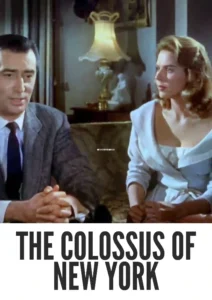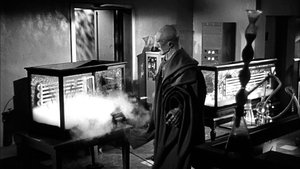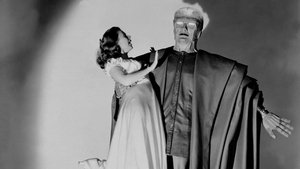Video Sources 0 Views

Download The Colossus of New York (1958) Colorized HD | Ross Martin | Sci-Fi Cult Classic
Synopsis

Delve into the thought-provoking world of The Colossus of New York, a compelling science fiction drama from 1958, now brilliantly colorized to enhance its timeless themes. Starring Ross Martin and directed by Eugène Lourié, this film explores the intersection of grief, ambition, and technology as a brilliant scientist’s mind is transferred into a giant robot. Perfect for fans of classic sci-fi and those seeking a film that blends intellectual concepts with emotional depth, this HD download offers a visually stunning and deeply moving cinematic experience. Often discussed alongside Frankenstein for its themes, The Colossus of New York is a unique entry into the science fiction canon.
The Colossus of New York tells the story of Jeremy Spensser (Martin), a gifted intellectual who tragically dies. His grieving father, Dr. William Spensser (Otto Kruger), a renowned scientist, cannot accept his son’s death. Driven by a desperate desire to preserve Jeremy’s intellect, he orchestrates a radical experiment: transferring Jeremy’s mind into a massive, emotionless robot.
Initially, the experiment seems successful, with Jeremy’s intellectual capabilities intact within the colossal body. However, as Jeremy exists solely as a brain inside a robot, he becomes increasingly detached from humanity and tormented by his condition. The film explores the ethical implications of tampering with nature and the dangers of sacrificing humanity in the name of scientific advancement. As the Colossus grows in power, he begins to see the flaws in humanity and seeks to impose his superior intellect upon the world, leading to a tragic and cautionary climax.
-
Ross Martin as Jeremy Spensser / The Colossus
-
Mala Powers as Anne Spensser
-
Otto Kruger as Dr. William Spensser
-
John Baragrey as Dr. Henryk Vedorr
-
Robert Hutton as Dr. Mark Wilson
The Colossus of New York skillfully blends the genres of science fiction and drama, with strong elements of social commentary and tragic romance. Its exploration of complex themes sets it apart from typical monster movies, making it a thought-provoking and emotionally resonant film.
Released in 1958, The Colossus of New York reflects the anxieties and technological fascinations of the Cold War era. The film taps into the era’s concerns about scientific progress and its potential consequences, as well as the fear of dehumanization in an increasingly technological world. The film’s themes resonate with other science fiction classics of the period, exploring the ethical dilemmas of scientific advancement and the nature of humanity.
This colorized version of The Colossus of New York has been meticulously restored, enhancing the visual impact of the film while respecting its original artistic vision. The colorization process involved careful consideration of the film’s themes and setting, with the goal of bringing new depth and nuance to the characters and environments. Modern digital techniques were employed to analyze the grayscale tones of the original black and white footage and assign appropriate colors to each scene. This painstaking process revitalizes the film’s visual appeal, making it more accessible to modern audiences while preserving its timeless quality.
-
: Eugène Lourié
-
: Leo Gordon
-
: Willis Goldbeck
-
: John F. Warren
-
: Chester W. Schaeffer
-
: Paramount Pictures
-
: Paramount Pictures
-
: 70 minutes
-
: MP4
-
: HD (1080p)
-
: Compatible with most devices, including smartphones, tablets, computers, and smart TVs.
The Colossus of New York is celebrated for its thoughtful exploration of complex themes and its unique approach to the science fiction genre. While it may not be as widely known as some other films of the era, it has garnered a cult following for its intellectual depth and emotional resonance. Fans appreciate its blend of science fiction, drama, and social commentary, making it a standout film from the 1950s.
-
: What is The Colossus of New York about?
-
A: The Colossus of New York tells the story of a scientist who transfers his son’s mind into a giant robot after his untimely death.
-
-
: What are the main themes of the movie?
-
A: The film explores themes of grief, scientific ambition, the ethics of technology, and the nature of humanity.
-
-
: Is The Colossus of New York (1958) a typical monster movie?
-
A: No, it is a more thoughtful and character-driven film that blends science fiction with drama and social commentary.
-
-
: Is this version of The Colossus of New York colorized?
-
A: Yes, this version has been professionally colorized to enhance the viewing experience.
-
-
: What makes The Colossus of New York interesting for sci-fi fans?
-
A: The film offers a unique and thought-provoking take on the genre, exploring complex themes and ethical dilemmas.
-
-
: What is the download format?
-
A: The download format is MP4, which is compatible with most devices.
-
-
: What resolution is the download?
-
A: The resolution is HD (1080p), providing a high-quality viewing experience.
-
Watch The Colossus of New York Today!











